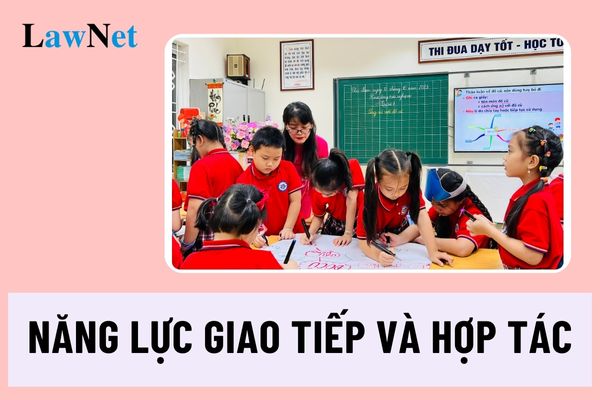Requirements for Problem-Solving and Creativity Competencies of Students at All Levels in Vietnam
What are requirements for problem-solving and creativity competencies of students at all levels in Vietnam?
According to Section 9 of the General Education Program issued with Circular 32/2018/TT-BGDDT, the competencies for problem-solving and creativity for students at various educational levels under the General Education Program are specified as follows:
| Competencies | Primary Level | Lower Secondary Level | Upper Secondary Level |
| Identifying new ideas | Ability to identify and clarify information and new ideas from given sources with guidance. | Ability to identify and clarify information and new ideas; ability to analyze and summarize relevant information from various sources. | Ability to identify and clarify complex new information and ideas from different information sources; ability to analyze independent sources to assess the tendencies and reliability of new ideas. |
| Detecting and clarifying issues | Ability to collect information from situations, recognize simple issues, and ask questions. | Ability to analyze situations in learning; identify and articulate problematic situations in learning. | Ability to analyze situations in learning and life; identify and articulate problematic situations in learning and life. |
| Forming and implementing new ideas | Based on existing understanding, ability to form new ideas for oneself and predict the outcomes when executed. | Ability to identify positive new elements in others' opinions; form ideas based on provided information sources; propose improvements or replacement solutions for outdated ones; compare and comment on proposed solutions. | Ability to present many new ideas in learning and life; think outside the box; create new elements based on various ideas; form and connect ideas; research to adapt solutions to changing contexts; evaluate risks and have contingency plans. |
| Proposing and choosing solutions | Ability to propose simple solutions to problems with guidance. | Ability to identify and explore information related to the issue; propose problem-solving solutions. | Ability to collect and clarify information related to the issue; propose and analyze several problem-solving solutions; choose the most suitable solution. |
| Designing and organizing activities | - Ability to identify the main content and activity methods to achieve set goals with guidance. - Ability to comment on the significance of activities. |
- Ability to develop activity plans with appropriate objectives, content, and methods. - Ability to assign suitable tasks to participants. - Ability to evaluate the appropriateness of plans, solutions, and their implementation. |
- Ability to develop activity plans with suitable objectives, content, methods, and means; - Ability to gather and coordinate necessary resources (human and material) for activities. - Ability to adjust plans, their implementation, methods, and progress of problem-solving to fit the context for optimal effectiveness. - Ability to evaluate the effectiveness of solutions and activities. |
| Independent thinking | Ability to raise questions about observed objects and phenomena; willingness to express personal opinions despite differing views; readiness to change upon realizing errors. | Ability to ask various questions about an object, phenomenon, or issue; listen attentively and receive information and ideas with consideration and selection; pay attention to evidence when evaluating objects and phenomena; evaluate issues from different perspectives. | Ability to ask valuable questions, not easily accepting one-sided information; open-minded in evaluating issues; pay attention to compelling arguments and evidence; ready to re-evaluate issues. |

What are requirements for problem-solving and creativity competencies of students at all levels in Vietnam? (Image from the Internet)
Is problem-solving and creativity a core competency for students at various educational levels in Vietnam?
According to the General Education Program issued along with Circular 32/2018/TT-BGDDT, it specifies 10 core competencies of primary school students including:
- 03 General competencies of students:
+ Self-control and self-study competency
+ Communication and cooperation competency
+ Problem-solving and creativity competency
- 07 Specific competencies of students:
+ Language competency
+ Mathematical competency
+ Scientific competency
+ Technological competency
+ Informatics competency
+ Aesthetic competency
+ Physical competency
Problem-solving and creativity competency is also a core competency for students.
What are the ages of students in the current General Education Program in Vietnam?
According to Clause 1, Article 28 of the Education Law 2019, the ages of students in the General Education Program are regulated as follows:
Levels of education and ages of general education
1. The levels of education and ages of general education are regulated as follows:
a) Primary education is conducted over 05 academic years, from grade one to grade five. The age of students entering grade one is 06 years, calculated by year;
b) Lower secondary education is conducted over 04 academic years, from grade six to grade nine. Students entering grade six must have completed the primary education program. The age of students entering grade six is 11 years, calculated by year;
c) Upper secondary education is conducted over 03 academic years, from grade ten to grade twelve. Students entering grade ten must have a lower secondary education diploma. The age of students entering grade ten is 15 years, calculated by year.
2. Cases where students study beyond the standard age, including:
a) Students advancing classes in cases of early intellectual development;
b) Students studying at an older age in cases of grade repetition, students in areas with particularly difficult socio-economic conditions, ethnic minority students, students with disabilities, students with physical or intellectual underdevelopment, orphans without guardians, students from poor households, students returning from abroad, and other cases as prescribed by law.
...
Accordingly, the ages of students at various levels are as follows:
| GRADE | AGE |
| Grade 1 | 6 years old |
| Grade 2 | 7 years old |
| Grade 3 | 8 years old |
| Grade 4 | 9 years old |
| Grade 5 | 10 years old |
| Grade 6 | 11 years old |
| Grade 7 | 12 years old |
| Grade 8 | 13 years old |
| Grade 9 | 14 years old |
| Grade 10 | 15 years old |
| Grade 11 | 16 years old |
| Grade 12 | 17 years old |
Note: Except in cases of grade repetition or students entering school earlier/later than the age prescribed by law.










- What are details of the Cultural Heritage Law 2024? What are regulations on educational activities of museums in Vietnam?
- Where is Congo? When do students in Vietnam learn about the geographical location of African?
- How to prevent school violence in vocational education institutions in Vietnam?
- Vietnam: What are the guidelines for making a Christmas tree from cardboard? May students participate in making Christmas Trees from cardboard held by their classes?
- What are guidelines on handling incidents of school violence in Vietnam?
- What is Google Scholar? What contents must be included in the Regulation on the organization of online university training in Vietnam?
- Vietnam: What are the coloring pages themed Tet and Spring for children? What are the 03 available types of preschool education institutions?
- What is social evil? What are objectives for preventing and combating drug-related social evils in schools by 2025 in Vietnam?
- What is the sample outline for an essay showing feelings on the town scene at night in the short story "Hai đứa trẻ"? What are the requirements for the programmes of general education in Vietnam?
- What are the sample social argumentative essays on the waste of idle time among Vietnamese youth? What is the basis for assessing the training results of 11th-grade students?

